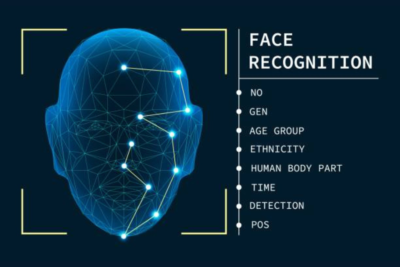The role of Business Intelligence (BI) Data is to improve any given business operations through the use of relevant analysis. Those that effectively employ BI tools and techniques can translate their collected data into valuable insights about their business processes and strategies. Such insights can then be used to make better and more informed business decisions.
As a result, something that can increase productivity and revenue, leading to accelerated business growth and higher profits. By all means, a great Business Intelligence (BI) process combines a broad set of data analysis applications — designed to meet different information needs. Most are supported by both self-service BI software and traditional BI platforms.
This means, that without BI, organizations can’t readily take advantage of data-driven decision-making. Instead, executives and workers are primarily left to base important business decisions on other factors, such as accumulated knowledge, previous experiences, intuition, and gut feelings. Those methods can result in good decisions, yes, but there are also drawbacks.
Such as the element of being fraught with the potential for errors and missteps because of the lack of data underpinning them. With that in mind, this article will explore more about the role of BI, the most commonly used types, the benefits, and the main application tools. As well as have a look at how to best utilize BI effectively in your next strategic business plans.
Understanding What A Business Intelligence (BI) Process Entails
Business intelligence (BI) is a technology-driven process for analyzing data and delivering actionable information that helps executives, managers, and workers make informed business decisions. The process allows you to collect data from internal IT systems and external sources, prepare it for analysis, run queries against the data, and create data visualizations.
In other words, Business Intelligence (BI) is an application software that ingests business data and presents it in user-friendly views such as reports, dashboards, charts, and graphs. BI tools enable business users to access different types of data — historical and current, third-party and in-house, as well as semi-structured data and unstructured data like social media.
With the right BI solutions, its users can analyze this information to gain insights into how the business is performing. Usually, business managers make use of BI Dashboards and data reports to make the analytics results available to business users for operational strategic planning and decision-making. The ultimate goal of BI initiatives is to drive better business decisions.
Eventually, this is something that helps enable organizations to increase revenue, improve operational efficiency and gain competitive advantages over business rivals. To achieve that goal, BI incorporates a combination of analytics, data management, and reporting tools, plus various methodologies for managing and analyzing data.
How The Business Intelligence (BI) Process Works For Entrepreneurs
Markedly, according to CIO magazine: “Although Business Intelligence does not tell business users what to do or what will happen if they take a certain course, neither is BI only about generating reports. Rather, it offers a way for people to examine data to understand trends and derive insights.”Organizations can use the insights gained from BI in many ways.
For instance, they can utilize data analysis reports to improve business decisions, identify problems or issues, spot market trends, and find new revenue or business opportunities. But, a credible Business Intelligence Architecture includes more than just BI software. Typically, Business Intelligence (BI) Data is often stored in a data warehouse built for an entire organization.
Or rather, in smaller data marts that hold subsets of business information for individual departments and business units, often with ties to an enterprise data warehouse. In addition, data lakes based on Hadoop clusters or other big data systems are increasingly used as repositories or landing pads for BI and analytics data, especially for log files, sensor data, text, etc.
As well as other types of unstructured or semistructured data. BI data can include historical information and real-time data gathered from source systems as it’s generated, enabling BI tools to support both strategic and tactical decision-making processes too. Before it’s used in BI apps, raw data from different source systems generally must be integrated into the system.
It must also be consolidated and cleansed using data integration and data quality tools to safeguard and manage data. And also, to ensure that BI teams and business users are analyzing accurate and consistent information.
The next steps in the BI process are as follows:
- data preparation, in which data sets are organized and modeled for analysis,
- analytical querying of the prepared data,
- distribution of Key Performance Indicators (KPIs) and other findings to business users,
- and, use of the information to help influence and drive business decisions.
Initially, BI tools were primarily used by BI and IT professionals who ran queries and produced dashboards and reports for business users. Increasingly, however, business analysts, executives, and workers are using business intelligence platforms themselves. Suffice it to say, that this is all thanks to the development of Self-Service BI and data discovery application tools.
On one hand, self-service business intelligence environments enable business users to query BI data, create data visualization, and design dashboards on their own. BI programs, on the other hand, often incorporate forms of advanced analytics. Such as data mining, predictive analytics, text mining, big data analytics, statistical analysis, and the like.
A common example is predictive modeling that enables what-if analysis of different business scenarios. In most cases, though, advanced analytics projects are conducted by separate teams of data scientists, statisticians, predictive modelers, and other skilled analytics professionals, while BI teams oversee more straightforward querying and analysis of business data.
The Main Benefits, Types, Tools, And Applications
A successful BI program produces a variety of benefits in an organization. For example, it enables C-suite executives and department managers to monitor business performance on an ongoing basis so they can act quickly when issues or opportunities arise. Analyzing customer data helps make marketing, sales, and customer service efforts more effective.
As an example, Supply Chain, manufacturing, and distribution bottlenecks can be detected before they cause financial harm. HR managers are better able to monitor employee productivity, labor costs, and other workforce data. Overall, there are some notable and key benefits that businesses can get from a quality Business Intelligence (BI) process plus other applications.
Such benefits include the ability to:
- speed up and improve decision-making;
- optimize internal business processes;
- increase operational efficiency and productivity;
- spot business problems that need to be addressed;
- identify emerging business and market trends;
- develop stronger business strategies;
- drive higher sales and new revenues; and
- gain a competitive edge over rival companies.
BI initiatives also provide narrower business benefits — among them, making it easier for project managers to track the status of business projects and for organizations to gather competitive intelligence on their rivals. In addition, BI, data management and IT teams themselves benefit from business intelligence, using it to analyze various aspects of tech and analytics plans.
In general terms, enterprise BI use cases include:
- monitoring business performance or other types of metrics
- supporting decision-making and strategic planning
- evaluating and improving business processes
- giving operational workers useful information about customers, equipment, supply chains, and other business elements
- detecting trends, patterns, and relationships in data.
Specific use cases and BI applications vary from industry to industry. For example, financial services firms and insurers use BI for risk analysis during the loan and policy approval processes and to identify additional products to offer to exist customers based on their current portfolios. BI helps retailers with marketing campaign management, promotional planning, etc.
In addition to inventory management, manufacturers heavily rely on BI for both historical and real-time analysis of plant operations. Specifically, to help them manage production planning, procurement, and distribution. Airlines and hotel chains are big users of BI for things such as tracking flight capacity and room occupancy rates and setting and adjusting prices.
As well as scheduling workers. In healthcare organizations, BI and analytics aid in the diagnosis of diseases and other medical conditions and in efforts to improve patient care and outcomes. Universities and school systems tap BI to monitor overall student performance metrics and identify individuals who might need assistance, among other technologies such as:
1. Ad Hoc Analysis
Also known as ad hoc querying, ad hoc analysis are one of the foundational modern BI elements and a key self-service BI tool. It’s the process of writing and running queries to analyze specific business issues. While ad hoc queries are typically created on the fly, they often end up being run regularly, with the analytics results incorporated into dashboard reports.
2. Online Analytical Processing
Most Online Analytical Processing (OLAP) Tools enable users to analyze data along multiple dimensions, which is particularly suited to complex queries and calculations. In the past, the data had to be extracted from a data warehouse and stored in multidimensional OLAP cubes, but it’s increasingly possible to run OLAP analyses directly against columnar databases.
3. Mobile Business Intelligence
The definition of Mobile Business Intelligence refers to the access and use of information via mobile devices. With the increasing use of mobile devices for business – not only in management positions – mobile BI is able to bring business intelligence and analytics closer to the user when done properly.
Mobile Business Intelligence makes BI applications and dashboards available on smartphones and tablets. Often used more to view data than to analyze it, mobile BI tools typically are designed with an emphasis on ease of use. For example, mobile dashboards may only display two or three data visualizations and KPIs so they can easily be viewed on a device’s screen.
4. Real-Time Business Intelligence
In Real-Time BI Applications, data is analyzed as it’s created, collected, and processed to give users an up-to-date view of business operations, customer behavior, financial markets, and other areas. The real-time analytics process often involves streaming data and supports decision analytics uses like credit scoring, stock trading, and targeted promotional offers.
5. Operational Intelligence (OI)
Also called operational BI, Operational Intelligence (OI) is a form of real-time analytics that delivers information to managers and frontline workers in business operations. OI applications are designed to aid in operational decision-making and enable faster action on issues — for example, helping call center agents resolve problems for customers and logistics managers.
In particular, so as to ease distribution bottlenecks. So, we can simply say that Operations Intelligence is a type of business analytics that allows organizations to generate a performance and feedback loop. While, at the same time, providing decision-makers with real-time insights and visibility into business operations findings.
6. Software-As-A-Service BI
Tools use cloud computing systems hosted by vendors to deliver data analysis capabilities to users in the form of a service that’s typically priced on a subscription basis. Also known as cloud BI, the Software-As-A-Service BI option increasingly offers multi-cloud support. Essentially, which enables organizations to deploy BI applications on different cloud platforms.
More so, in order to meet user needs and avoid vendor lock-in. Simply put, SaaS Business Intelligence, or SaaS BI, is a cloud-based distribution model in which a third-party provider hosts BI tools in a secure online environment. As such, most SaaS BI tools deliver analytics services like dashboards and reports with flexible pricing directly to companies.
7. Open-Source Business Intelligence (OSBI)
For beginners and newcomer businesses alike, Open-Source Business Intelligence (OSBI) is commonly defined as useful business data that is not traded using traditional software licensing agreements. Meaning, that this is one of the best alternatives for businesses that want to aggregate more data from data-mining processes without buying fee-based products.
Business intelligence software that is open source typically includes two versions. A community edition — can be used free of charge and a subscription-based commercial release with technical support by the vendor. BI teams can also access the source code for development uses. In addition, some vendors of proprietary BI offer free editions, primarily for individuals.
8. Embedded Business Intelligence Tools
To enumerate, Embedded BI is the integration of reports, dashboards, and data visualizations inside an application. The information is typically displayed and managed by a BI platform and is placed directly within the application’s user interface to improve data usability and decision-making. In essence, Embedded Business Intelligence Tools are very useful utilities.
For one, they help put BI and data visualization functionality directly into business applications. That enables business users to analyze data within the applications they use to do their job. Embedded analytics features are most commonly incorporated by application software vendors, but corporate software developers can also include them in homegrown applications.
9. Collaborative BI Tools
In layman’s language, Collaborative Business Intelligence Tools are also called Social Business Intelligence Tools that empower the use of social media tools or collaboration software. Such as Microsoft Teams combined — or with the help of BI tools such as Power BI — to help improve business decision-making.
This is more of a process than a specific technology that combines BI applications and collaboration tools to enable different users to work together on data analysis and share information with one another. For example, users can annotate BI data and analytics results with comments, questions, and highlighting using online chat and discussion tools.
10. Location Intelligence (LI)
Location Intelligence (LI) is a specialized BI that enables users to analyze the location and geospatial data, with map-based data visualization functionality incorporated. It offers insights into geographic elements in business data and operations. Potential uses include site selection for retail stores and corporate facilities, location-based marketing, and logistics management.
How Are The Solution Vendors In The Marketplace
Self-service BI and data visualization tools have become the standard for modern BI software. Tableau, Qlik, and Spotfire, which are now part of Tibco Software, took the lead in developing self-service technology early and became prominent BI market competitors by 2010. Traditional BI query vendors and reporting tools have followed in their path since then.
Now, virtually every major BI tool incorporates self-service features, such as visual data discovery and ad hoc querying.
Modern BI platforms typically include:
- data visualization software for designing charts and other infographics to show data in an easy-to-grasp way
- dashboards, reports, and performance scorecards building tools that display visualized data on KPIs and other metrics
- data storytelling features for combining visualizations and text in presentations for business user
- usage monitoring, performance optimization, security controls, and other functions for managing BI deployments.
BI tools are available from dozens of vendors overall. Major IT vendors that offer BI software include IBM, Microsoft, Oracle, SAP, SAS, and Salesforce, which bought Tableau in 2019 and also sells its own tools developed before the acquisition. Google is also in the BI market through its Looker unit, acquired in 2020.
Other notable BI vendors include Alteryx, Domo, GoodData, Infor Birst, Information Builders, Logi Analytics, MicroStrategy, Pyramid Analytics, Sisense, ThoughtSpot, and Yellowfin. While full-featured BI platforms are the most widely used business intelligence technology, the BI market also includes other product categories.
Some vendors offer tools specifically for embedded BI uses; examples include GoodData and Logi Analytics. Companies like Looker, Sisense, and ThoughtSpot target complex and curated data analysis applications. Various dashboard and data visualization specialists focus on those parts of the BI process; other vendors specialize in data storytelling tools.
Business Intelligence (BI) For Big Data Plus Other Trends
BI platforms are increasingly being used as front-end interfaces for big data systems that contain a combination of structured, unstructured, and semi-structured data. Modern BI software typically offers flexible connectivity options, enabling it to connect to a range of data sources. This, along with the relatively simple User Interface (UI) in most BI tools is quite useful.
It makes it a good fit for big data architectures. Users of BI tools can access Hadoop and Spark systems, NoSQL databases, and other big data platforms, in addition to conventional data warehouses, and get a unified view of the diverse data stored in them. That enables a broad number of potential users to get involved in analyzing sets of big data.
More so, instead of highly skilled data scientists being the only ones with visibility into the data. Alternatively, big data systems serve as staging areas for raw data that later is filtered and refined and then loaded into a data warehouse for analysis by BI users. In addition to BI managers, business intelligence teams generally include a mix of BI architects.
As well as other related BI developers, BI analysts, and BI specialists who work closely with data architects, data engineers, and other data management professionals. Business analysts and other end users are also often included in the BI development process to represent the business side and make sure its needs are met.
Other notable trends in the BI market include the following:
- The proliferation of augmented analytics technologies. BI tools increasingly offer natural language querying capabilities as an alternative to writing queries in SQL or another programming language, plus AI and machine learning algorithms that help users find, understand and prepare data and create charts and other infographics.
- Low-code and no-code development. Many BI vendors are also adding graphical tools that enable BI applications to be developed with little or no coding.
- Increased use of the cloud. BI systems initially were slow to move to the cloud, partly because data warehouses were primarily deployed in on-premises data centers. But cloud deployments of both data warehouses and BI tools are growing; in early 2020, consulting firm Gartner said most new BI spending is now for cloud-based projects.
- Efforts to improve data literacy. With self-service BI broadening the use of business intelligence tools in organizations, it’s critical to ensure that new users can understand and work with data. That’s prompting BI teams to include data literacy skills in user training programs. BI vendors have also launched initiatives, such as the Qlik-led Data Literacy Project.
To help with that, a growing number of organizations are replacing traditional waterfall development with Agile BI and data warehousing approaches that use Agile software development techniques to break up BI projects into small chunks and deliver new functionality on an incremental and iterative basis.
Doing so enables companies to put BI features into use more quickly and to refine or modify development plans as business needs change or new requirements emerge.
Takeaway Notes:
Gartner predicts that even in the post-pandemic era, nearly half (48 percent) of all employees will still do some degree of remote work, whether it’s entirely work-from-home (WFH) or a hybrid model that blends in-office and WFH. The shift to remote work may come at a cost, however. According to a survey done two years into the pandemic, there are still more insights.
Whereby, more than one-third (36%) of workers say their biggest frustration with remote work is ‘feeling disconnected from colleagues.’ In the wake of The Great Resignation (which saw a record 47.8 million U.S. workers quit their jobs in 2021), this worrisome sentiment can’t be ignored — more so, by employers who are already struggling to hire and retain talent.
Throughout the pandemic, Business Intelligence (BI) Technology has rapidly evolved to tackle feelings of fragmentation and isolation among remote workers. There are a few ways BI helps people who work from home stay connected.
Consider the following:
- Business Intelligence (BI) Helps Us Work From Anywhere
- BI Offers Very Creative Technology And User-Friendly Features
- With BI In Place, There Is A Seamless And Better Collaboration
Sporadic use of the term business intelligence dates back to at least the 1860s, but consultant Howard Dresner is credited with first proposing it in 1989 as an umbrella phrase for applying data analysis techniques to support business decision-making processes. What came to be known as BI tools evolved from earlier, often mainframe-based analytics technologies.
Such as decision support systems and executive information systems that were primarily used by business executives. Business intelligence is sometimes used interchangeably with business analytics. In other cases, business analytics is used either more narrowly to refer to advanced analytics or more broadly to include both that and BI.
Meanwhile, data analytics is primarily an umbrella term that encompasses all forms of BI and analytics applications. That includes the main types of data analysis: descriptive analytics, which is typically what BI provides; predictive analytics, which models future behavior and outcomes; and prescriptive analytics, which recommends business actions.








